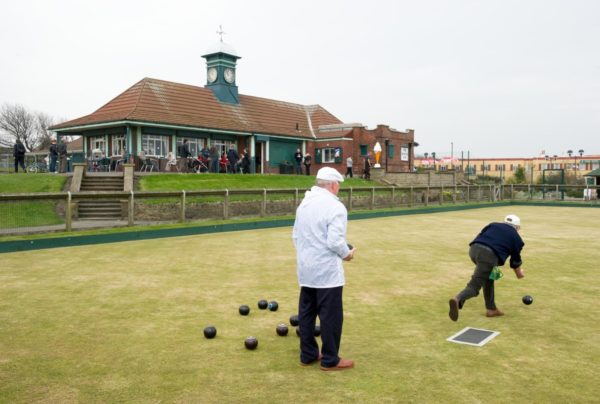Parks for People: the role of historic public parks for wellbeing
Ahead of next week’s publication of the evidence review on Family, Outdoor Recreation and Wellbeing we gain an insight from Jenifer White from Historic England on the historic and cultural importance of public parks, the benefits to mental health and the risk they are now under.
Public parks are used regularly by over 37 million people each year.1 We also know people are attracted to good quality parks.2 Parks are vital infrastructure for everyone in towns and cities offering places to meet, take time out, play and have fun.
The principles of public parks, what they offer and why we value them include:
- free access for all
- safe and welcoming
- family friendly
- attractive and interesting
Over the last 10 years awareness about the value of public parks for both physical and mental health has been growing.3 Why is Historic England, the government’s adviser for the historic environment, involved in these parks and health and wellbeing?
The history of public parks

Parks continue to be popular. Friends playing bowls at Tynemouth Park, which was created in 1893. © Historic England
These green spaces shape the character of our towns and cities creating attractive places for people and their families to live and work. The majority of the large public parks date from the late 19th and early 20th century. We have inherited a rich canon of public parks and gardens and these parks are of huge historic and cultural importance with some 300 designated as designed landscapes of national historic interest.
Public parks were created to offer healthy recreation for all, and in particular the working classes. The Victorians saw recreation as offering mental and physical wellbeing, and social benefits – literally a ‘re-creation’. They realised parks could serve as ‘The Lungs’ for the cities. The legislation for the new parks is embedded in the Victorian Health Acts and the development of public parks is very much interrelated with concerns about the welfare of employees, and civic consciousness.
Benefits for those with lowest wellbeing

Every generation has enjoyed public parks. This registered Grade II Hackney public park was opened in 1889. The park was awarded a £8.9 million Heritage Lottery Fund grant in 2011. © Historic England
150 years on there is renewed interest in the links between outdoor recreational activity and our wellbeing and a considerable body of evidence has been established. For instance, last October’s research paper on the ‘drivers of wellbeing inequality’ highlighted evidence linking heritage and outdoor recreational activities with lower wellbeing inequalities in local areas.4
A possible explanation for this interesting trend is that participation in heritage and green space activities has a greater effect on those with lower wellbeing. Indeed, the ‘drivers of wellbeing inequality’ paper also highlights evidence suggesting a positive correlation between heritage, volunteering and wellbeing, with greatest gains for those with lowest wellbeing.5
In addition, an 18-year study6 by Exeter University looked at the self-reported psychological health of individuals over time and the relationship between urban green space, wellbeing and mental distress. The research shows that parks can make you happier. The evidence highlights the importance of protecting parks and green spaces and promoting their wellbeing benefits.
The future of public parks
However, although public parks are highly valued by their communities, their future is far from assured. Many are facing a funding crisis and new management models are being discussed. The 100+ years of local authority conservation and management7 is being challenged and the very nature of the public park could be about to change.
The new Defra 25-year plan recognises the importance of parks and also the current risks:
‘Urban residents prize the parks, playing fields, woods, street trees and footpaths that make their district an attractive place. People in greener surroundings have longer and healthier lives… the number and condition of green spaces has declined and current investment is confined to specific projects. We risk losing more good quality green spaces’.8
The 25 year plan calls for access to the natural environment ‘to be at the heart of all local Health and Wellbeing Board strategies’ is welcomed, however, there is no specific policy for the very green spaces that were designed for health and wellbeing.
It highlights the need for more rigorous research and evidence on mental health and wellbeing benefits in relation to public parks and what impact that has on identity and sense of place. Many of these parks are of historic and cultural importance, and the most important are registered by Historic England for their national interest.
How do we sustain our fabulous inheritance of public parks and ensure they can continue to contribute to our wellbeing now and for many generations to come?
For further information please visit the Historic England website.
Jenifer White, National Landscape Adviser, Historic England
Footnotes
1 Heritage Lottery Fund 2016 State of K Public Parks 2016 https://www.hlf.org.uk/state-uk-public-parks-2016
2 Leeds University’s AHRC project The future prospects of urban parks: the life, times and social order of Victorian public parks as places of social mixing https://futureofparks.leeds.ac.uk/news/report /
3 For example Greater London Authority 2017 Natural capital accounts for public green spaces in London https://www.london.gov.uk/sites/default/files/11015viv_natural_capital_account_for_london_v7_full_vis.pdf
4 Abdallah, S. Wheatley, H. and Quick, A. ‘Drivers of wellbeing inequalities’, October 2017 Research paper https://www.whatworkswellbeing.org/blog/how-understanding-wellbeing-inequalities-can-inform-local-practice/
5 Ibid.
6 http://www.ecehh.org/research-projects/urban-green-space/ Matthew White et al, April 23, 2013 Would You Be Happier Living in a Greener Urban Area? A Fixed-Effects Analysis of Panel Data Psychological Science http://journals.sagepub.com/doi/abs/10.1177/0956797612464659
7 Katy Layton-Jones 2016 Historic England Research Report 20/2016 History of Public Park Funding and Management (1820 – 2010) http://research.historicengland.org.uk/Report.aspx?i=15442
8 Defra 2018 A Green Future: Our 25 Year Plan to Improve the Environment’, sets out what we will do to improve the environment, within a generation https://www.gov.uk/government/publications/25-year-environment-plan
